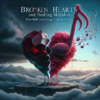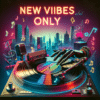Infusion of Emotion: How New R&B Artists Are Redefining the Genre

Introduction
Rhythm and Blues, commonly referred to as R&B, has long been a genre synonymous with soulful expression, rich melodies, and emotional depth. From its origins in the late 1940s as a blend of jazz, gospel, and blues, R&B has continuously evolved, absorbing influences from various musical styles. Today, a new wave of R&B artists is infusing the genre with fresh, contemporary emotions and experiences, redefining what R&B can represent in the modern music landscape. This article explores the historical context of R&B, showcases key artists reshaping the genre, examines current trends, and reflects on the broader cultural impact of this reinvention.
Historical Context
To truly appreciate the evolution of contemporary R&B, one must first understand its historical roots. Emerging in the African American community post-World War II, R&B was characterized by its rhythmic focus and heartfelt lyricism. Artists like Ray Charles, Ruth Brown, and James Brown were pivotal figures in the 1950s and 1960s, laying the groundwork for future generations. The genre underwent transformations during the soul music movement of the 1960s and 1970s, driven by artists such as Aretha Franklin and Marvin Gaye, who infused their work with social commentary and deep emotional resonance.
In the late 1980s and 1990s, the genre saw the rise of New Jack Swing and smooth R&B, with artists like Bobby Brown and Boyz II Men blending hip-hop elements with traditional R&B sounds. However, the 2000s brought another shift, as technology introduced new production techniques and platforms for distribution. The arrival of the internet and streaming platforms enabled a plethora of new voices to enter the R&B scene, allowing for a diversification of sound and style.
Key Artists
Several contemporary R&B artists stand out as pioneers redefining the genre. Their work demonstrates a fusion of personal narratives, innovative sounds, and emotional authenticity.
See Also: R&B Icons: The Artists Behind the Classics That Changed the World
R&B Icons: The Artists Behind the Classics That Changed the World1. SZA
SZA's debut album, Ctrl, released in 2017, marked a pivotal moment in modern R&B. With introspective lyrics that explore themes of love, anxiety, and self-identity, SZA resonates with a millennial audience that craves honesty in music. Her unique amalgamation of hip-hop, alternative rock, and traditional R&B elements embodies a new sound that feels both relatable and fresh.
2. H.E.R.
H.E.R. (Having Everything Revealed) has rapidly ascended within the R&B realm, noted for her powerful vocal delivery and potent songwriting. Her music is a fusion of modern R&B, soul, and pop, addressing issues of love, race, and identity. H.E.R.'s ability to connect with listeners through heartfelt storytelling is a hallmark of her artistry, as evidenced in tracks like "Focus" and "Damage."
3. Giveon
With a baritone that captivates the listener, Giveon has emerged as a standout figure in today’s R&B landscape. His 2020 EP, Take Time, showcases his distinctive voice and songwriting prowess, particularly in tracks such as "Heartbreak Anniversary." His music often encapsulates feelings of heartbreak and longing, capturing the complexities of modern relationships and emotional struggles.
4. Durand Bernarr
See Also: Broken Hearts and Healing Melodies: How R&B Love Songs Help Us Cope
Broken Hearts and Healing Melodies: How R&B Love Songs Help Us CopeDurand Bernarr represents a more avant-garde approach to R&B. Known for his genre-bending sound, Bernarr combines elements of funk, soul, and pop while harnessing his incredible vocal range. His performances and visuals challenge traditional norms and embrace a philosophy of self-expression and authenticity, pushing boundaries in both sound and representation.
Current Trends
The contemporary R&B scene is marked by several trends that illustrate its ongoing evolution.
1. Genre Fusion
Modern R&B artists are increasingly blending genres, integrating elements from pop, hip-hop, electronic, and even rock into their music. This fusion creates a diverse auditory landscape that caters to various tastes and preferences. For example, artists like Khalid and Lizzo incorporate pop sensibilities into their music, drawing in a broader audience.
2. Emotional Authenticity
Emotion is at the heart of R&B, and today’s artists are unafraid to express their vulnerabilities. This emotional authenticity is evident in the way they tackle complex subjects—mental health, love, and societal issues—in their lyrics. The candid articulation of feelings allows listeners to forge deeper connections with the music.
See Also: Soulful Sounds: The Hottest New R&B Tracks You Need to Hear This Month
Soulful Sounds: The Hottest New R&B Tracks You Need to Hear This Month3. Innovative Production Techniques
Innovative production methods are redefining the sonic aspects of R&B. With electronic beats, lo-fi aesthetics, and trap influences becoming more prevalent, a new sound has emerged that is both contemporary and reflective of the realities of modern life. This has led to an R&B soundscape that appeals to both traditional fans and newer audiences.
Cultural Impact
The resurgence of emotive, innovative R&B artists has broader cultural implications. R&B has always served as a platform for expression within the Black community, and the contemporary wave continues this tradition, amplifying voices that reflect diverse experiences.
This new generation of artists is not just contributing to musical culture; they are influencing conversations around mental health, self-acceptance, and social justice. The ability of R&B to adapt and provide commentary on current societal issues positions it as a dynamic genre in today's cultural discourse.
Conclusion
The infusion of emotion by new R&B artists signifies a profound shift within the genre, reflecting personal authenticity and social relevance. Figures like SZA, H.E.R., Giveon, and Durand Bernarr are redefining R&B by blending musical styles, embracing emotional vulnerabilities, and using their platforms to challenge societal norms. As R&B continues to evolve, it retains its core identity rooted in soulful expression while simultaneously resonating with a new generation. This ongoing transformation ensures that R&B remains not just a genre, but a powerful vessel for storytelling and cultural reflection.
See Also: New Vibes Only: Exploring the Latest R&B Releases Shaping the Genre
New Vibes Only: Exploring the Latest R&B Releases Shaping the GenreFAQs
1. What defines modern R&B?
Modern R&B is characterized by a blend of traditional R&B sounds with influences from pop, hip-hop, and electronic music. It often focuses on themes of emotional authenticity and personal experience.
2. Who are the most influential R&B artists today?
Some of the most influential R&B artists today include SZA, H.E.R., Giveon, and Durand Bernarr, each bringing unique perspectives and sounds to the genre.
3. How has technology impacted R&B?
Technology has dramatically changed how music is produced, distributed, and consumed. The rise of streaming platforms has allowed independent artists greater access to audiences, fostering diversification in the genre.
4. What themes do contemporary R&B artists explore?
See Also: Modern Icons: Discover the R&B Artists Shaping the Future of Music
Modern Icons: Discover the R&B Artists Shaping the Future of MusicContemporary R&B artists often address themes such as love, heartbreak, self-identity, mental health, and social justice, making their music resonate with a wide audience.
5. Is R&B still relevant in today's music industry?
Yes, R&B remains highly relevant, continually evolving and influencing other genres. Its emotional depth and cultural significance ensure its enduring appeal.
If you want to know other articles similar to Infusion of Emotion: How New R&B Artists Are Redefining the Genre you can visit the category R&B.
